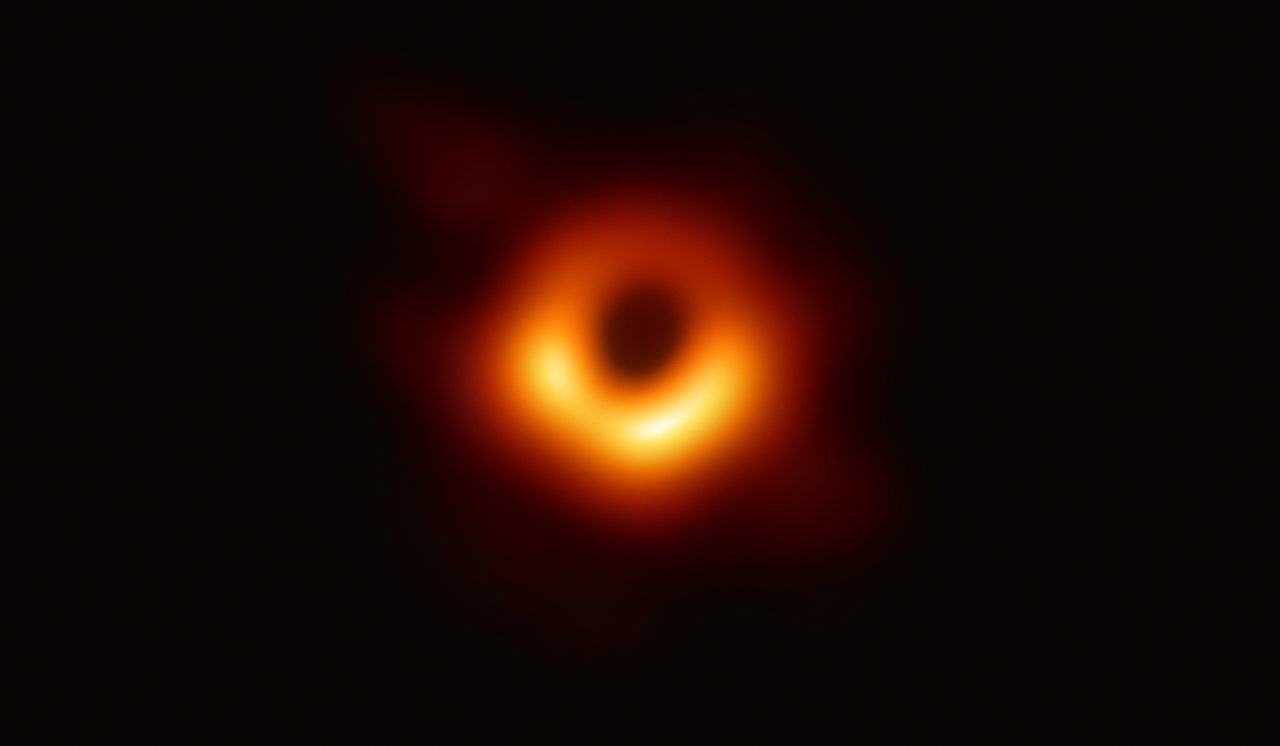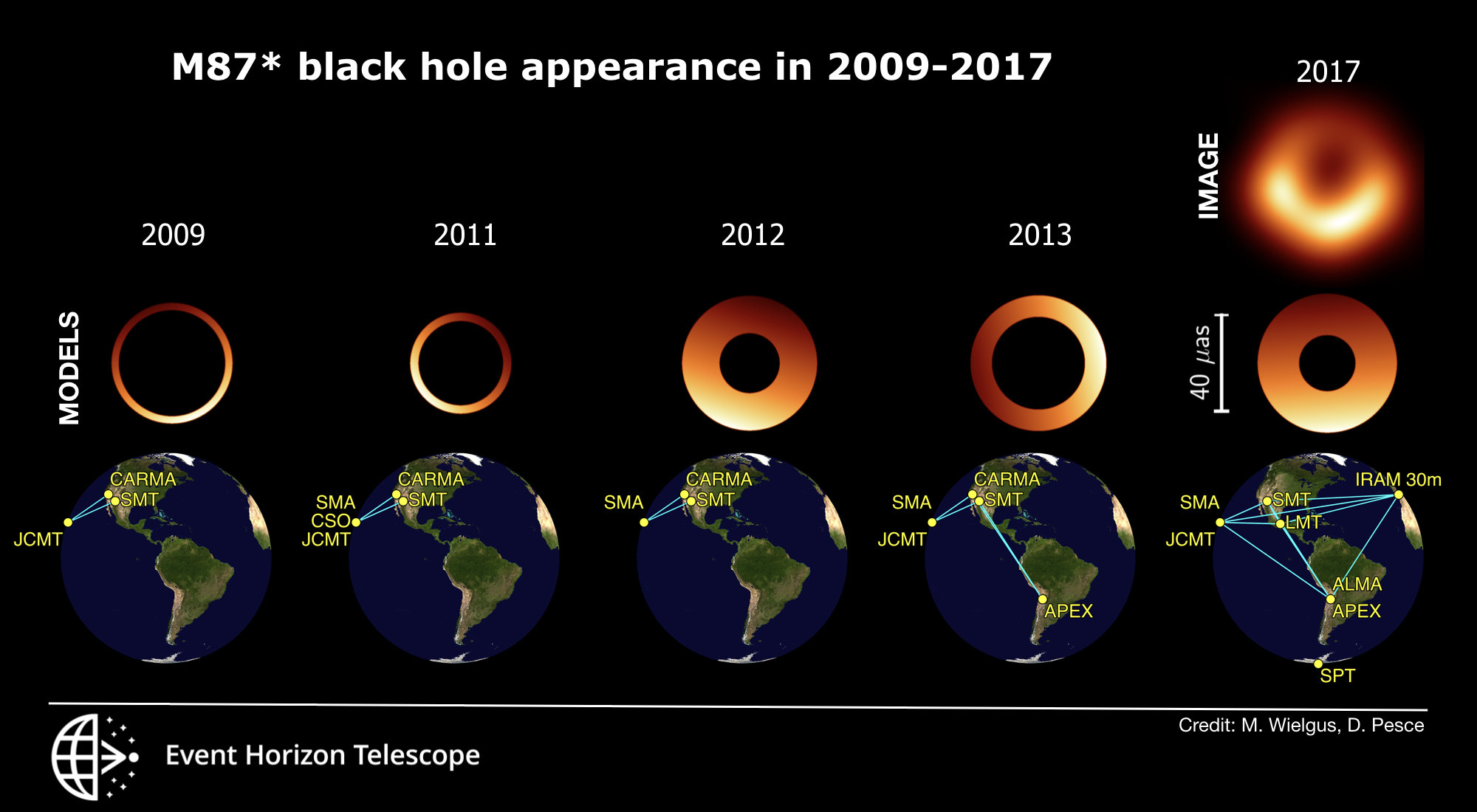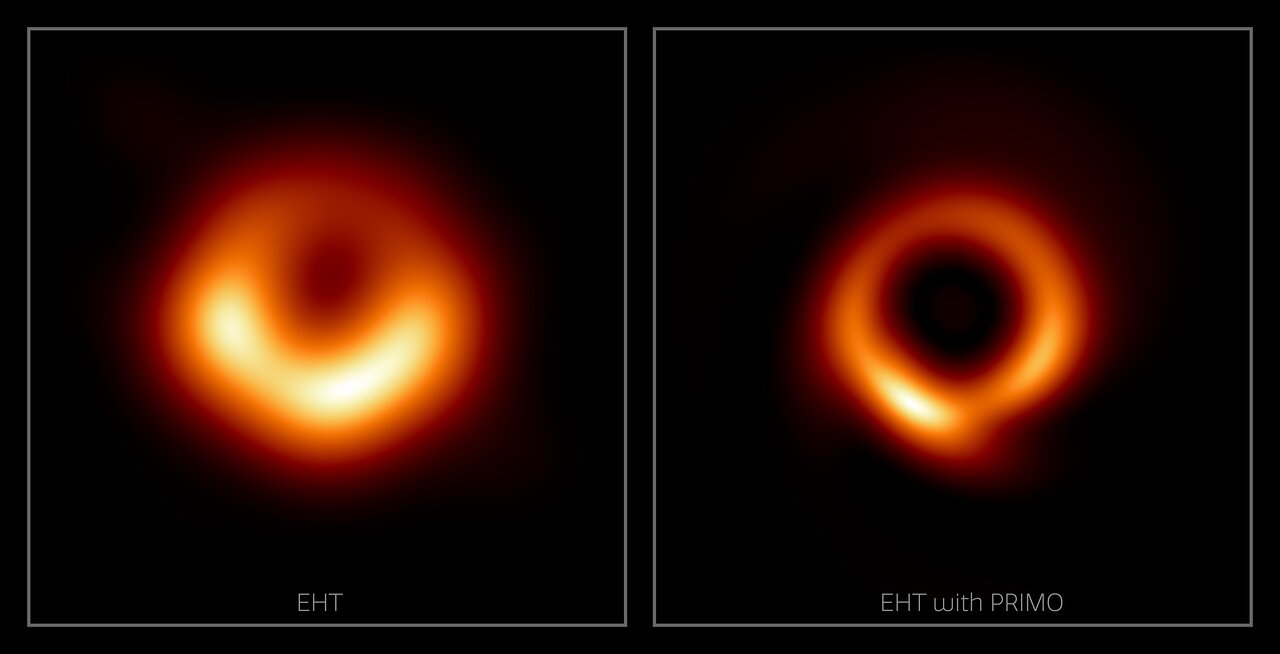Event Horizon Telescope | NSF | ESO | ALMA | 2019 Apr 10
An international collaboration presents paradigm-shifting observations of the gargantuan black hole at the heart of distant galaxy M 87
The Event Horizon Telescope (EHT) — a planet-scale array of eight ground-based radio telescopes forged through international collaboration — was designed to capture images of a black hole. Today, in coordinated press conferences across the globe, EHT researchers reveal that they have succeeded, unveiling the first direct visual evidence of a supermassive black hole and its shadow.
- Scientists have obtained the first image of a black hole, using Event Horizon Telescope observations of the center of the galaxy M87. The image shows a bright ring formed as light bends in the intense gravity around a black hole that is 6.5 billion times more massive than the Sun. This long-sought image provides the strongest evidence to date for the existence of supermassive black holes and opens a new window onto the study of black holes, their event horizons, and gravity. Credit: Event Horizon Telescope Collaboration
This breakthrough was announced today in a series of six papers published in a special issue of The Astrophysical Journal Letters. The image reveals the black hole at the centre of Messier 87 [1], a massive galaxy in the nearby Virgo galaxy cluster. This black hole resides 55 million light-years from Earth and has a mass 6.5 billion times that of the Sun [2].
The EHT links telescopes around the globe to form an unprecedented Earth-sized virtual telescope [3]. The EHT offers scientists a new way to study the most extreme objects in the Universe predicted by Einstein’s general relativity during the centenary year of the historic experiment that first confirmed the theory [4]. ...
First M87 Event Horizon Telescope Results.
- The Shadow of the Supermassive Black Hole ~ EHT Collaboration et al
- Astrophysical Journal Letters 875(1):L1 (2019 Apr 10) DOI: 10.3847/2041-8213/ab0ec7
- arXiv.org > astro-ph > arXiv:1906.11238 > 26 Apr 2019
- Array and Instrumentation ~ EHT Collaboration et al
- Astrophysical Journal Letters 875(1):L2 (2019 Apr 10) DOI: 10.3847/2041-8213/ab0c96
- arXiv.org > astro-ph > arXiv:1906.11239 > 26 Apr 2019
- Data Processing and Calibration ~ EHT Collaboration et al
- Astrophysical Journal Letters 875(1):L3 (2019 Apr 10) DOI: 10.3847/2041-8213/ab0c57
- arXiv.org > astro-ph > arXiv:1906.11240 > 26 Apr 2019
- Imaging the Central Supermassive Black Hole ~ EHT Collaboration et al
- Astrophysical Journal Letters 875(1):L4 (2019 Apr 10) DOI: 10.3847/2041-8213/ab0e85
- arXiv.org > astro-ph > arXiv:1906.11241 > 26 Apr 2019
- Physical Origin of the Asymmetric Ring ~ EHT Collaboration et al
- Astrophysical Journal Letters 875(1):L5 (2019 Apr 10) DOI: 10.3847/2041-8213/ab0f43
- arXiv.org > astro-ph > arXiv:1906.11242 > 26 Apr 2019
- The Shadow and Mass of the Central Black Hole ~ EHT Collaboration et al
- Astrophysical Journal Letters 875(1):L6 (2019 Apr 10) DOI: 10.3847/2041-8213/ab1141
- arXiv.org > astro-ph > arXiv:1906.11243 > 26 Apr 2019









